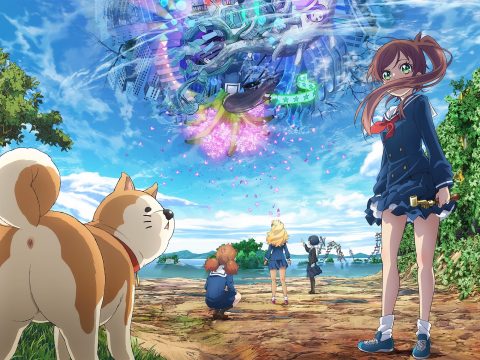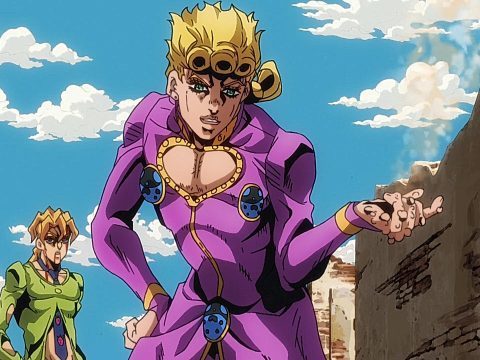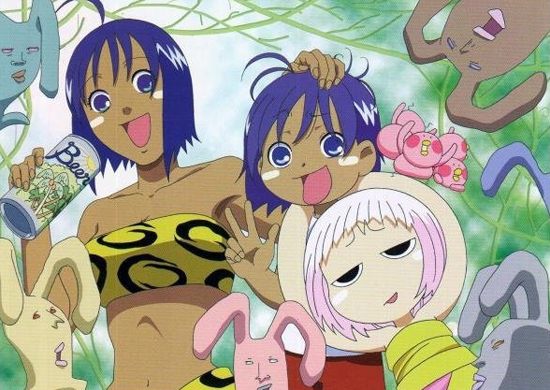
Director Tsutomu Mizushima has a variety of well-received shows smoking in his holster—from sports series like Big Windup! to darker fare like Another and Blood-C—but it’s hard to overlook his knack for comedy. Even if you were introduced to Mizushima by name through Girls und Panzer, which graces the cover of the latest issue of Otaku USA magazine, you’ve likely encountered any number of his more ridiculous series. Standing tall above more recent work like Yondemasu yo, Azazel-san and Squid Girl, however, is 2001’s Haré+Guu. If the face of every moe character was merely a veil draped over a gaping, apocalyptic maw tunneling toward the infinite beyond, we’d all be living in Guu’s surreal jungle, and we’d probably love every minute of it.
Haré+Guu, AKA Janguru wa Itsumo Hare nochi Guu, comes with a literal translation that fits perfectly: The Jungle Was Always Sunny, Then Came Guu. Based on Renjuro Kendaichi’s manga, which ran in Square Enix’s Monthly Shonen Gangan magazine from 1997-2002, the series’ plot is remarkably simple, belying a sinister underbelly that fuels the majority of its humor.
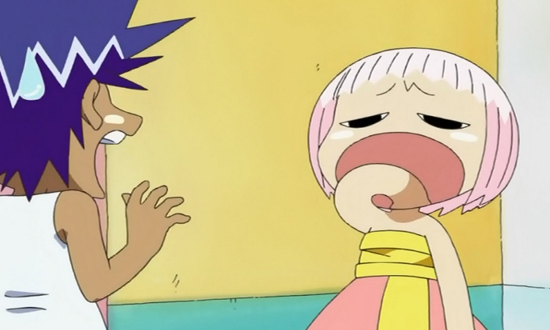
Haré is a young boy living happily in the jungle with his mother, Weda. Their life, practically idyllic as it is, comes to a bizarre intersection when a small girl named Guu joins their household. Initially presented as infectiously sweet, the pink-haired Guu can drop or summon her adorable expression at a moment’s notice, and it seems only Haré notices the difference. Her laconic nature is immediately unsettling, and while she appears harmless, it’s clear Guu is a disaster waiting to happen.
The horrifying mysteries bubbling beneath Guu’s enigmatic presence reveal themselves to Haré little by little, hanging just out of sight as far as the rest of the varied village cast is concerned. Things tend to disappear when Guu’s around. These things usually end up in her stomach, and size definitely isn’t a factor, as Haré soon finds out. When Guu ends up swallowing Haré whole, he finds himself in the sprawling world of Guu’s stomach, where he runs into a couple, Seiichi and Tomoyo, who’ve been in there for quite some time. Unlike them, Haré gets spit back out, but it all serves to establish that regular rules don’t exactly apply to someone like Guu.

Much of Haré+Guu‘s humor is fairly traditional outside of Guu, which is what makes her looming contribution to the series that much more potent. There’s no shortage of crazy characters on the sidelines—from Chourou, the village elder whose pride rests in his mighty tuft of chest hair, to the perverted Dr. Clive, and even the Pokute, man-faced rabbit creatures everyone loves to munch on—but it’s the strangely sinister aura around Guu that really makes the series special. She keeps things unpredictable, twisting the laws of nature in a way that makes anything fair game, and there’s always something around the corner to elicit a gasping, frantic “Oh-God-what-the-hell-is-she-about-to-do” reaction from Haré.
Shin-Ei Animation cooperated with a handful of production companies throughout the course of Haré+Guu‘s 26-episode run on TV Tokyo, with Animation DO and Kyoto Animation among the studios. There’s nothing terribly remarkable about the animation, though it is hard to believe it’s hovering around 12 years old at this point. What really matters in a show like this, however, is timing, and Mizushima and his team definitely nailed it.
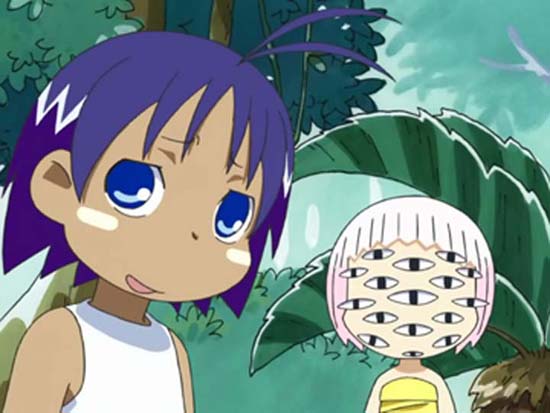
Anyone who can get their hands on Haré+Guu—which was previously licensed by AN Entertainment, who FUNimation helped with its release on DVD back in 2006—should definitely do so, and the OVAs that followed are worth watching, too. The series has just the right combination of nonsense and an overarching plot that does its best to make sure the jokes don’t wear too thin. It’s been a while since I watched the entire series from beginning to end, but it’s definitely about time for a full return visit to the jungle, which used to be such a happy place until…



